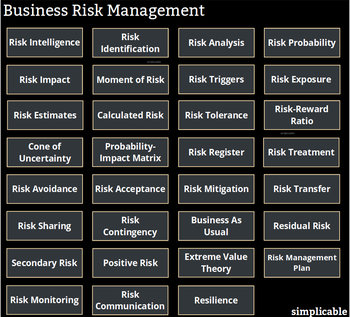
Infrastructure
A proposed tsunami shelter is constructed to withstand a 12 meter, or 39 foot, tsunami. Models indicate that a tsunami larger than 12 meters will strike the area once every 1300 years. This risk is published to the community and accepted as part of the project approval process.Transportation
A jet engine has a historical failure rate of 0.4 per million departures. Regulators and customers generally view this as an acceptable level of risk.Business
A bicycle manufacturer depends on a single supplier for tires. Without a supply of these tires, production will cease and revenue will decline. The probability of a major supply disruption is forecast to be 0.6% per annum. The management of the company decide to accept this risk.Individual
A snowboarder estimates a 20% chance of a broken bone in a season. They decide this is acceptable given the rewards they find in the sport.| Overview: Acceptable Risk | ||
Type | ||
Definition | A risk exposure that is deemed acceptable to an individual, organization, community or nation. | |
Related Concepts | ||






























